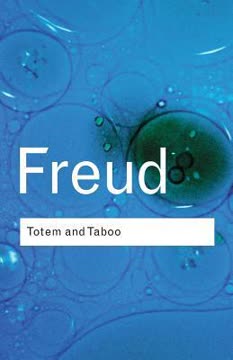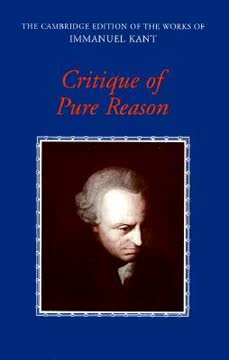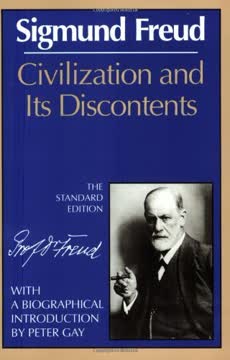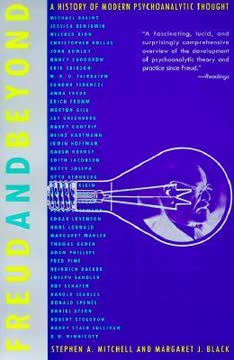Key Takeaways
1. Lacanian Psychoanalysis: A Clinical, Not Academic, Practice
The goal of my teaching has always been, and remains, to train analysts.
Practical application. Lacanian psychoanalysis, despite its theoretical complexity, is fundamentally a clinical endeavor aimed at training practitioners and addressing concrete patient problems. Unlike its perception in America as a "dead, academic discourse," in France, it thrives in hospitals and clinics, focusing on real-world issues like diagnosis, medication, and patient engagement. The author's goal is to make Lacan's clinical approach accessible to a wide range of clinicians.
Common ground. The book bridges the gap between Lacanian theory and everyday clinical experience, finding common ground in universal practitioner challenges. These include:
- Engaging patients in therapy
- Managing anxiety and demands
- Handling transference love
- Setting aside personal feelings and prejudices
- Working with patient aggression and criticism
Invitation to practice. This introduction assumes no prior Lacanian knowledge, offering a practical overview and an invitation to explore Lacan's "often impenetrable opus" through subjective, clinical experience. It emphasizes that books are merely a starting point; true understanding comes through analysis, supervision, and direct clinical work.
2. The Analyst's Desire, Not the Patient's Will, Drives Therapy
If there is a desire in therapy that serves as its motor force, it is the analyst’s, not the patient’s.
Challenging assumptions. Contrary to the common belief that patients must "genuinely want to change," Lacan posits that patients are deeply invested in their symptoms, which provide a "substitute satisfaction" (jouissance). They often enter therapy not with a will to change, but because their desire is stifled or dying, making the analyst's desire the true engine of the therapeutic process.
Analyst's active role. The analyst's desire is a "purified desire" focused solely on analysis, not personal wishes for the patient's happiness or success. This desire manifests in subtle or strong encouragements for the patient to continue therapy, talk, dream, fantasize, and associate. It is not a personal feeling but a function, a role to be played, maintaining the analytic frame.
Countertransference. While analysts inevitably experience countertransferential feelings (attraction, anger), Lacan insists these must be set aside during interventions. These feelings can inform the analyst's self-understanding or gauge the patient's libidinal economy, but should never be revealed, as they would situate the analyst as an "imaginary other" rather than a pure analytic function.
3. Symptoms Provide "Jouissance": Therapy Begins in Crisis
The moment at which someone seeks therapy can thus be understood as one in which a breakdown occurs in that person’s favorite or habitual way of obtaining jouissance.
Crisis as catalyst. People typically seek therapy during a "jouissance crisis," when their usual symptomatic satisfactions are failing, threatened, or outweighed by other factors. Symptoms, though often painful, provide a "kick" or "pleasure in pain" (jouissance) that the individual is reluctant to relinquish, as it may be their only known source of enjoyment.
Beyond satisfaction. "Jouissance" is a more nuanced term than "satisfaction," encompassing pleasure derived from pain, self-punishment, or even dissatisfaction. It captures the "dirty" or "filthy" ways individuals obtain enjoyment, often unconsciously, from their symptoms. Patients initially demand relief from this crisis, hoping the therapist will restore their old ways of obtaining jouissance.
A different satisfaction. The therapist, however, offers a new substitute satisfaction: the unique pleasure derived from the transference relationship and the deciphering of the unconscious. This is not what patients explicitly ask for, highlighting why therapy is not a simple contract between "clients" and providers. The term "analysand" emphasizes the patient's active role in the analytic work.
4. Preliminary Meetings: Active Analyst Role in Diagnosis and Engagement
The early part of analysis involves a kind of explicit and not-so-explicit pedagogy.
Establishing the frame. The "preliminary meetings" are crucial for transitioning patients from everyday notions of therapy to genuine analytic work. The analyst actively establishes that the therapeutic relationship is unique, non-reciprocal, and focused on unconscious manifestations, not casual conversation or advice.
Pedagogical and clinical aims:
- Pedagogical: Teach the analysand to free associate, pay attention to dreams, fantasies, slips of the tongue, and other unconscious phenomena, without censoring.
- Clinical: Quickly establish a preliminary diagnosis (neurosis, psychosis, perversion) to guide the analyst's positioning and interventions. This is vital, as treating psychotics like neurotics can be dangerous.
Active interventions. During these face-to-face meetings, the analyst uses "punctuations" (e.g., "Huh!", repeating words) and "scansion" (abruptly ending sessions) to highlight significant unconscious material. These interventions aim to:
- Suggest alternative meanings without explicit interpretation.
- Arouse curiosity about the unconscious.
- Prevent superficial chatter and focus attention on essential revelations.
5. Meaning is Never Obvious: The Analyst Prioritizes the Unconscious
The very foundation of interhuman discourse is misunderstanding.
Skepticism of face value. In analysis, nothing the patient says or does can be taken at face value. Demands, excuses, and even seemingly straightforward statements are often contradictory or mask deeper motives related to "psychical reality" rather than objective "reality pure and simple." The analyst maintains a skeptical stance, probing beyond the obvious.
Ambiguity of language. Meaning is inherently individual and ambiguous. The analyst must act "uncomprehending" to encourage patients to elaborate on their unique understanding of words and expressions, rather than assuming shared meaning. This process reveals unintended, unconscious meanings that patients are often unaware of.
Prioritizing the unconscious. By emphasizing ambiguities, double entendres, and slips of the tongue, the analyst prioritizes "what the analysand actually says" over "what he means." This Lacanian "return to Freud" privileges the unconscious over the ego, challenging the patient's self-image and opening a space for questioning the "what, why, and who" of their utterances. This engagement with the unconscious transforms demand into desire.
6. The Analyst as Cause: Embodying the "Subject Supposed to Know"
The subject supposed to know something of importance in psychoanalysis is the analysand’s unconscious.
Beyond suggestion. While patients may initially attribute vast knowledge to the analyst (the "subject supposed to know"), true psychoanalysis does not rely on this suggestibility. Instead, the analyst's role is to embody the unconscious as the "subject supposed to know," systematically emphasizing its manifestations (slips, dreams, fantasies) and refusing to present themselves as an all-knowing master.
Placeholder for the Other. The analyst must allow themselves to be cast as a "blank screen" or "placeholder" for the analysand's unconscious, becoming an "Other with a capital 'O'"—that which the analysand considers radically foreign. This requires the analyst to keep personal feelings and character traits out of the therapy, preventing imaginary rivalries and allowing projections to occur.
Cause of desire. As the analyst consistently highlights unconscious material, the analysand begins to view the analyst as the cause of these formations (e.g., "I had a dream last night because I knew I was coming to see you"). This positions the analyst as "object a," the real cause of the analysand's desire, which is the "Archimedean point" for therapeutic change, allowing the fundamental fantasy to be modified.
7. Neurosis, Psychosis, Perversion: Defined by Distinct Mechanisms of Negation
Lacan’s diagnostic schema is remarkably simple, including only three main categories: neurosis, psychosis, and perversion.
Structural diagnosis. Lacanian diagnosis moves beyond symptom-based classifications (like DSM-IV) to structural categories based on three fundamental mechanisms of negation, or "forms of negation" (Verneinung). These are:
- Repression (Verdrängung): Characteristic of neurosis.
- Disavowal (Verleugnung): Characteristic of perversion.
- Foreclosure (Verwerfung): Characteristic of psychosis.
Causal mechanisms. These mechanisms are not merely associated with the structures; they are constitutive of them. For example, foreclosure is the cause of psychosis. This structural approach implies that a patient's core psychic organization is fixed, meaning a psychotic cannot become neurotic, though symptoms can be managed.
Clinical implications. Diagnosis is crucial for guiding the therapist's approach, positioning in transference, and intervention style. It dictates what techniques are applicable and safe. "Normal" individuals are generally considered neurotic, as repression is a universal human mechanism.
8. Neurosis: Repression, Unsatisfied/Impossible Desire, and the Other's Jouissance
The neurotic’s desire is not his or her “own” in the first place, for it has never been subjectified.
Repression's core. Neurosis is defined by repression, where thoughts related to unacceptable impulses are pushed out of consciousness, while the associated affect may persist or be displaced. The "return of the repressed" manifests as dreams, slips, bungled actions, and symptoms, which are messages to the Other.
Hysteria vs. Obsession:
- Hysteria: Characterized by an unsatisfied desire. The hysteric (often female) constitutes herself as the object the Other is missing, seeking to master the Other's desire by keeping it unsatisfied. She asks, "Am I a man or a woman?" and often identifies with both male and female positions.
- Obsession: Characterized by an impossible desire. The obsessive (often male) seeks to neutralize or annihilate the Other, refusing dependence and believing he exists only when consciously thinking. He asks, "Am I dead or alive?" and often falls in love with inaccessible partners to maintain his desire.
Refusal of Other's Jouissance. Both hysterics and obsessives, despite their differing strategies, ultimately refuse to be the cause of the Other's sexual satisfaction. They position themselves to avoid being the object the Other "gets off on," even if this means sacrificing their own satisfaction or unwittingly ensuring the Other's jouissance through self-deprivation or conformity to ideals.
9. Psychosis: Foreclosure of the Paternal Function and Language Disintegration
Foreclosure involves the radical rejection of a particular element from the symbolic order (that is, from language), and not just any element: it involves the element that in some sense grounds or anchors the symbolic order as a whole.
Paternal function failure. Psychosis results from the "foreclosure" of the Name-of-the-Father (Nom-du-Père), a radical rejection of the paternal function from the symbolic order. This function, typically embodied by the father, separates the child from the mother's engulfing desire, laying down the law and anchoring language. Its absence means the symbolic order is fundamentally ungrounded.
Clinical manifestations:
- Bona fide hallucinations: Characterized by subjective certainty and attribution of external agency, unlike neurotic doubts or fantasies.
- Language disturbances: Psychotics are "inhabited by language," experiencing words as things, using neologisms, and struggling with metaphorical creation due to the failure of the paternal metaphor.
- Predominance of imaginary relations: Conflicts are often with "others like themselves" (rivals, persecutors), rather than the symbolic Other. The ego's boundaries are fluid, leading to confusion between self and other.
- Invasion of jouissance: The body, not overwritten by the symbolic, is inundated with raw, unchanneled jouissance, experienced as attacks or indescribable sensations.
- Lack of control over drives: Psychotics are prone to immediate, uninhibited action with little guilt, as the moral law (superego) is not durably instated.
- Feminization in men: Male psychotics may adopt a feminine position due to an imaginary, rather than symbolic, relationship with a domineering father.
Treatment approach. Lacanian analysis for psychosis aims not to "cure" the structure, but to "prop up" or "supplement" the symbolic order, often by encouraging the patient to construct a "delusional metaphor" or a stable system of meaning. The therapist avoids acting as a symbolic father, instead focusing on supporting the imaginary to prevent further disintegration.
10. Perversion: Disavowal and the Staging of the Law
The pervert, on the other hand, does not hand that pleasure over, does not surrender his pleasure to the Other.
Disavowal's essence. Perversion is defined by "disavowal" (Verleugnung), a mechanism distinct from repression. It involves a "staging" or "making believe" regarding the paternal function: "I know full well my father hasn't truly named my mother's lack, but I will stage the accomplishment of that naming." The pervert attempts to make the law-giving Other exist.
Refusal of sacrifice. Unlike the neurotic who reluctantly sacrifices jouissance, the pervert refuses to surrender the pleasure derived from the mother or mother substitute. This refusal stems from a partial failure of the paternal function, where the father is too weak or indifferent to effectively separate the child from the mother's desire.
Perverse strategies:
- Fetishism: The fetish object (e.g., a row of buttons) serves to "supplement" the father's inadequate naming of the mother's lack, providing a fleeting, repeated separation from the overwhelming maternal desire.
- Masochism: The masochist orchestrates scenarios to make the partner (as Other) enunciate the law and exact punishment, thereby bringing the law into being and achieving a momentary, anxiety-relieving separation.
- Sadism: The sadist plays the role of the Other, isolating an object (e.g., the victim's beloved) to be lost, thereby staging the enunciation of the law and proving its existence through the victim's anxiety.
Jouissance and the law. Perversion paradoxically involves a "will to jouissance" that aims to set limits to jouissance itself. The pervert gets off on the enactment of castration, the staging of the very operation that demands a loss of satisfaction, thereby attempting to complete a separation that was never fully achieved.
11. The Paternal Metaphor: Explaining Existence and Anchoring Meaning
The paternal function served by the latter is grounded in linguistics; his function is a symbolic one.
Explanatory principle. The paternal metaphor, understood as two distinct logical moments, provides the subject with an "explanatory principle" for their existence—an interpretation of why they were born and their place in their parents' desire. This symbolic function, not necessarily tied to the biological father, anchors meaning and allows the subject to navigate the world.
Two moments:
- Alienation (Primal Repression): The father's "No!" prohibits the child's pleasurable contact with the mother, leading to the repression of desire for the mother and the child's entry into language. This is the first division.
- Separation (Secondary Repression): The father names the mother's desire/lack, constituting it as a displaceable, enigmatic desire for something beyond the child. This forces the child out of the position of being the mother's sole object, propelling them into their own quest for desire.
Consequences of failure.
- Psychosis: Occurs when alienation fails; the Name-of-the-Father is foreclosed, leading to a lack of symbolic anchoring and language disintegration.
- Perversion: Occurs when alienation succeeds but separation fails; the mother's lack is not named, and the pervert attempts to stage the law's enunciation to achieve separation.
- Neurosis: Occurs when both alienation and separation succeed, but the subject remains unable to fully "traverse the fantasy" and assume responsibility for their own desire beyond the Other's ideals.
Creating truth. The paternal metaphor, or its substitutes (like a delusional metaphor in psychosis or a therapist's "calculated lie"), creates a foundational "truth" that allows for questioning and meaning-making. Without this anchoring, there is no stable ground for the subject to stand on, leading to profound existential uncertainty.
Last updated:
Review Summary
A Clinical Introduction to Lacanian Psychoanalysis is widely praised as a clear, accessible introduction to Lacan's complex theories. Readers appreciate Fink's ability to elucidate difficult concepts and apply them to clinical practice. Many found it helpful for understanding Lacan's ideas and their practical applications. Some criticize the dense content and Lacanian approach, while others consider it essential reading. The book is particularly valued for its case studies and explanations of key Lacanian concepts like the Real, Symbolic, and Imaginary. Overall, it's seen as an important resource for those studying Lacan or psychoanalysis.
Similar Books










Download PDF
Download EPUB
.epub digital book format is ideal for reading ebooks on phones, tablets, and e-readers.





